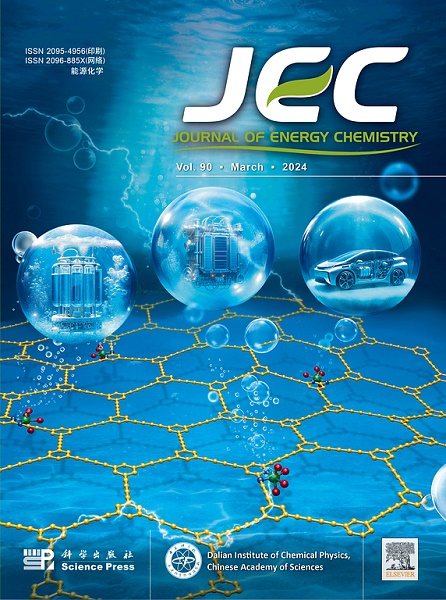Electrochemical and microscopic characterization of fuel cell catalyst layer degradation during accelerated stress tests: a review
IF 13.1
1区 化学
Q1 Energy
引用次数: 0
Abstract
The catalyst layer is an essential component of fuel cells, exerting a decisive influence on performance, particularly under degradation processes. Characterization derived from accelerated stress tests (ASTs) provide valuable insights into the long-term degradation from the perspective of changes in physical and chemical properties, thereby offering a scientific foundation for evaluating advanced materials and strategies. In this review, multidimensional and multi-characterization application scenarios based on ASTs data are systematically summarized. Firstly, the degradation mechanism of catalyst layer (CL) under AST conditions is discussed, with an emphasis on platinum aging and carbon support corrosion. In addition, electrochemical and microphysical characterization tools applicable to different AST test protocols, such as electrochemical surface area (ECSA), electrochemical impedance spectrum (EIS) mapping combined with distribution of relaxation times (DRT), and microscopic physical evolution and tracking techniques for each internal chemical component, are also presented in detail. Finally, through the existing research progress and hotspots, the application prospect of data fusion is elaborated and the important research direction of material optimization and performance prediction based on AST data is emphasized, aiming to provide insights into the study of catalytic layer degradation in fuel cells and promote the continuous development of the field.

求助全文
约1分钟内获得全文
求助全文
来源期刊

Journal of Energy Chemistry
CHEMISTRY, APPLIED-CHEMISTRY, PHYSICAL
CiteScore
19.10
自引率
8.40%
发文量
3631
审稿时长
15 days
期刊介绍:
The Journal of Energy Chemistry, the official publication of Science Press and the Dalian Institute of Chemical Physics, Chinese Academy of Sciences, serves as a platform for reporting creative research and innovative applications in energy chemistry. It mainly reports on creative researches and innovative applications of chemical conversions of fossil energy, carbon dioxide, electrochemical energy and hydrogen energy, as well as the conversions of biomass and solar energy related with chemical issues to promote academic exchanges in the field of energy chemistry and to accelerate the exploration, research and development of energy science and technologies.
This journal focuses on original research papers covering various topics within energy chemistry worldwide, including:
Optimized utilization of fossil energy
Hydrogen energy
Conversion and storage of electrochemical energy
Capture, storage, and chemical conversion of carbon dioxide
Materials and nanotechnologies for energy conversion and storage
Chemistry in biomass conversion
Chemistry in the utilization of solar energy
 求助内容:
求助内容: 应助结果提醒方式:
应助结果提醒方式:


